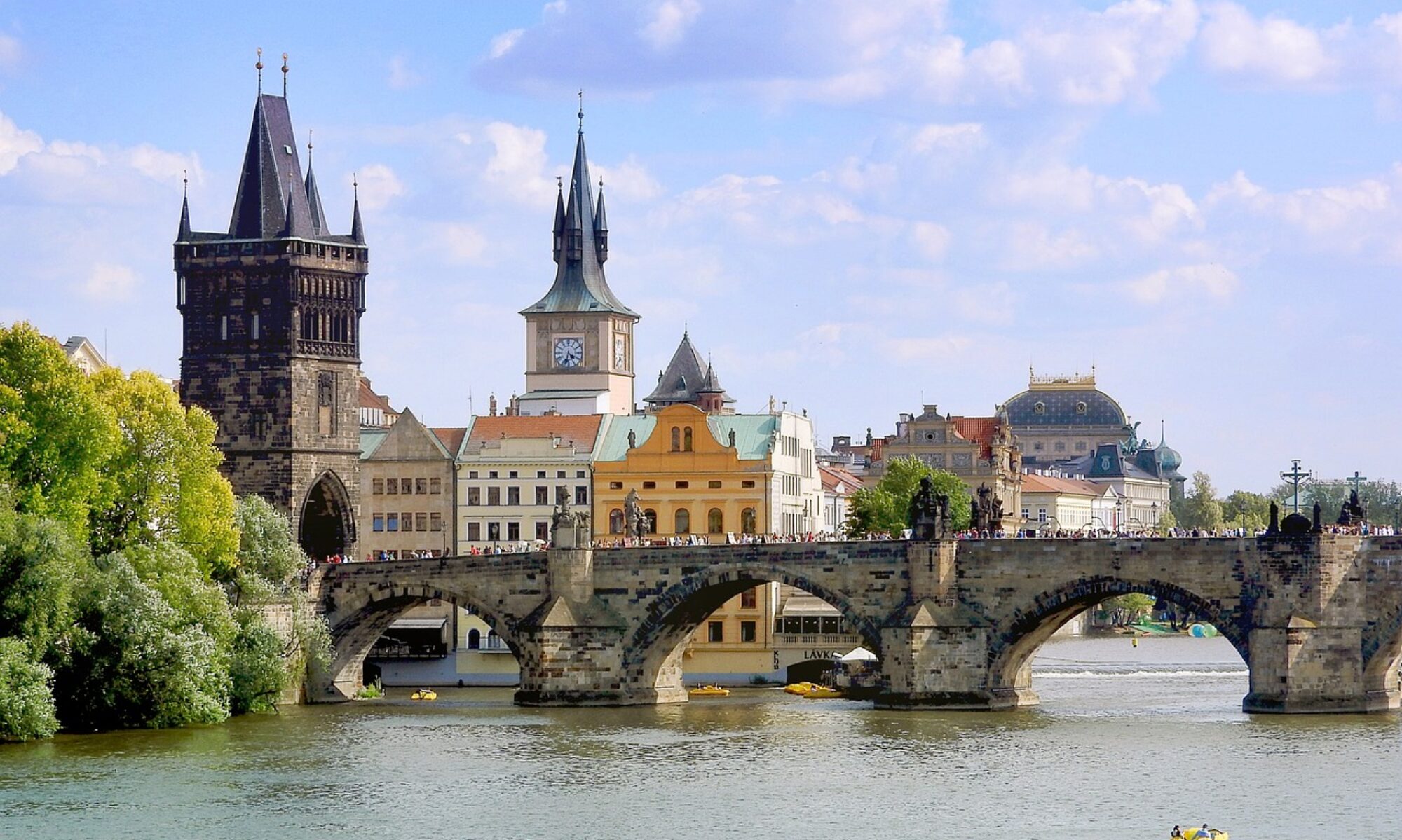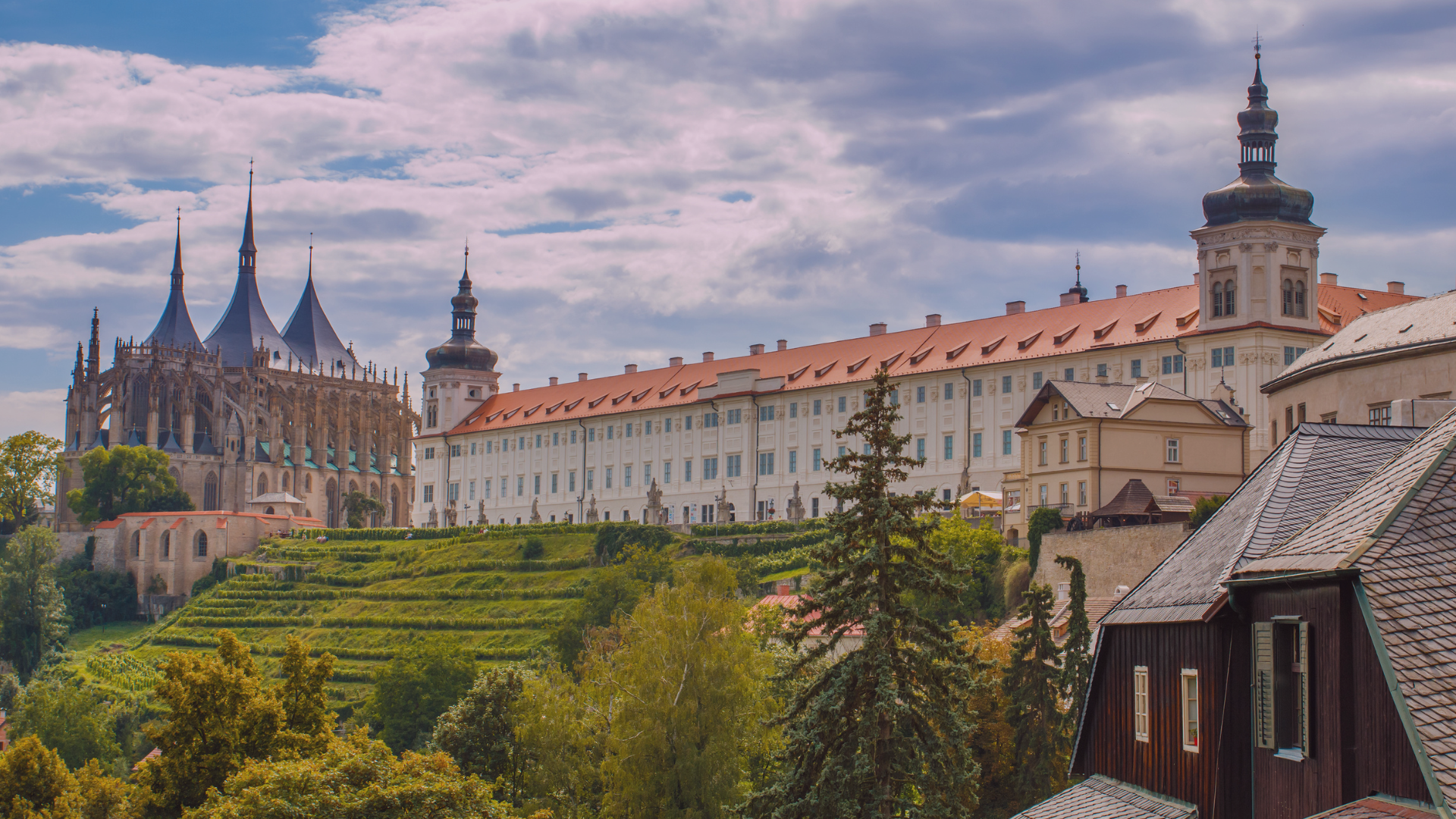The royal town of silver and rare monuments
Kutná Hora, the famous royal town in central Bohemia, is immediately associated with the famous Saint Barbar’s Church. The unique work of high and late Gothic architecture is literally a magnet for visitors, whose steps are most directed towards this stunning monument. Historic Kutná Hora, which today has around 20,000 inhabitants, was made famous by silver mining in the Middle Ages. It ranks among the most important Czech royal cities . The unique monument reserve is listed on the UNESCO World Cultural Heritage List . Thousands of Czech and foreign visitors come here every year. After all, the city is full of architectural and historical gems.
Saint Barbara's Church
Temple of St. Barbara, the leading monument of the silver city, is part of the UNESCO list. The temple was dedicated to the patron saint of wreckers, St. Barbara. The cathedral with five naves was founded as a miner’s temple, modeled on French cathedrals. Masters such as Petr Parléř, Benedikt Rejt or Matyáš Rejsek left their artistic signature on the appearance of the monument. The temple took 500 years to build and was originally supposed to be 25 m longer. Tourists can see the magnificent building full of stories. In the interior, they will admire a unique gallery of late Gothic and Renaissance paintings from the 15th century. An exhibition is located on the inner balconies, which introduces the development of the temple’s construction and the exterior decoration. It is possible to order a guide for the tour or an interactive guide is available for download.

Statues of Saints
To the St. Barbara’s Church can be reached by visitors to the city via the viewing terrace, reminiscent of stone bridge. On one side, the terrace is flanked by the Jesuit college with the GASK Gallery, and on the other by statues of saints. On the way to the temple, tourists can see a set of thirteen sculptures from the 18th century. Apart from the statue of Jan Nepomucký by an unknown author, all the others were made by the Czech Jesuit, sculptor František Baugut. Among the most famous are St. Barbara, St. Wenceslas , St. Anna and others. From the terrace there is a magical view of the surroundings of Kutná Hora, lined with local vineyards.
Italian Court
Vlašský dvůr (Italian Court) belongs to the Kutná Hora’s monument reserve, which, like the Church of St. Barbory is a national cultural monument. Every visitor to the city will be delighted to view the exhibition dedicated to the former mint, where King Wenceslas II. had Prague groschen minted in 1300. The mint was rebuilt into a two-story palace with a chapel at the beginning of the 15th century. Thematic circuits await tourists: the Royal Mint, the Royal Palace with movie rooms and the Mystery of the Lost Silver in the cellar. In the mint, the guest can mint a Prague groschen by hand. A tour of the royal palace is also attractive.
Church of the Assumption of the Virgin Mary
In Kutná Hora, the center of interest for tourists is another important monument – the Cathedral of the Assumption of the Virgin Mary and St. John the Baptist. It is located in a part of the city of Sedlec and is part of a former Cistercian monastery. By the builder of the cathedral which was built in style Baroque Gothic after 1700, the architect and builder is Jan Blažej Satini Aichel. The attic and the inner circle with the temple treasury are accessible. Night tours are also organized here.

Sedlec Osuarry
In Sedlec, not far from the cathedral, in the basement of the church, one of the most visited local monuments is located in the cemetery – Kostnice. The space of the small chapel is filled with 40 thousand human bones and skulls originating from plague epidemics and victims of the Hussite wars. Constance dates from the 13th century. The bizarre decoration consists of a chandelier composed of all the bones of the human body.
Plague Column
In Šultysova Street you can see another gem of the Kutná Hora’ Baroque, the Plague Column created by František Baugut. It recalls the plague epidemic of the early 18th century, which killed more than a thousand people. At the top of the column is a statue of the Virgin Mary Immaculate. Tourists also notice a sculpture of working wreckers on the column.
Dačický House
A center for the provision of modern cultural and educational services was recently established in the birthplace of chronicler and rioter Mikuláš Dačický from Heslov which is located in the center of the city. The Dačické House is unique in that visitors can see all the UNESCO monuments in the Czech Republic in one place in an interactive way. The tour also includes the Portal Hall and the Bishop’s Chapel. The exhibition is accessible from the basement to the attic, and even children can get to know the city of silver in a playful way. Very popular is the experience IQ park, where video mapping on the model of the St. Barbara’s Church, a touch table, an animated film and for children, building blocks and other play elements.
Restaurant Dačický
After visiting the Dačický house, tourists can go to Restaurant Dačický for excellent Czech cuisine. The interiors from the 19th century are decorated with illustrations referring to the life of Mikuláš Dačický, whose family founded the local brewery in the 16th century. In the restaurant, which boasts an original wooden gazebo and a large summer terrace with centuries-old linden trees, they offer, for example, an original specialty – boar stew with gingerbread dumplings. Six kinds of beers can be tasted , including tank Kutná Hora from the restored brewery.
Castle Kačina
Kačina Castle is a unique building of Empire architecture, only 6.5 km from Kutná Hora in the village of Svatý Mikuláš. The castle which was built at the beginning of the 19th century by Count J.R. Chotek, is a national cultural monument. The exhibition of the National Agricultural Museum can be seen. In addition to the permanent exhibits and exhibitions dedicated to the Czech countryside and agriculture, visitors can see the chambers, the servants’ quarters, the library, the theater, the chapel, the greenhouse, the herb garden and the stables.


